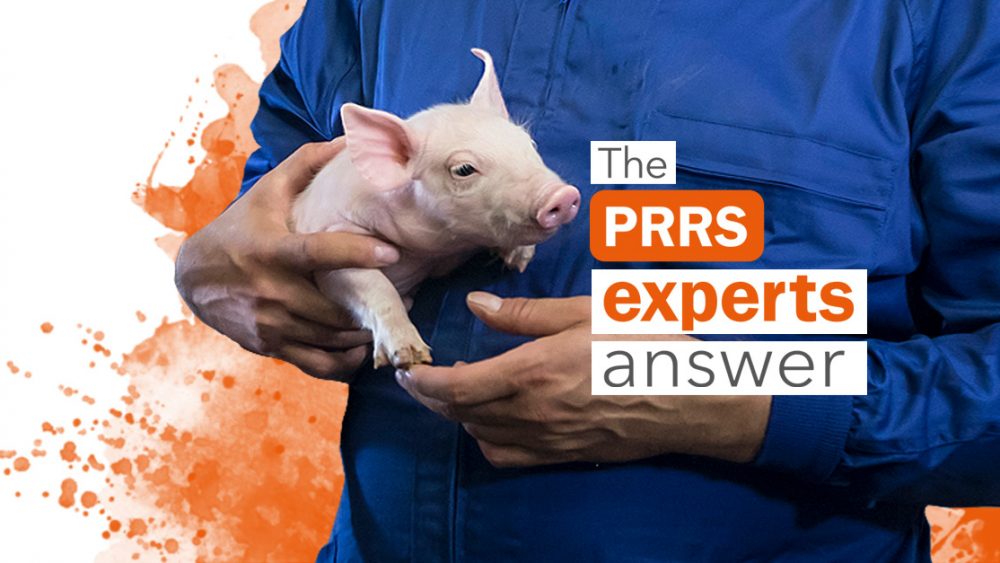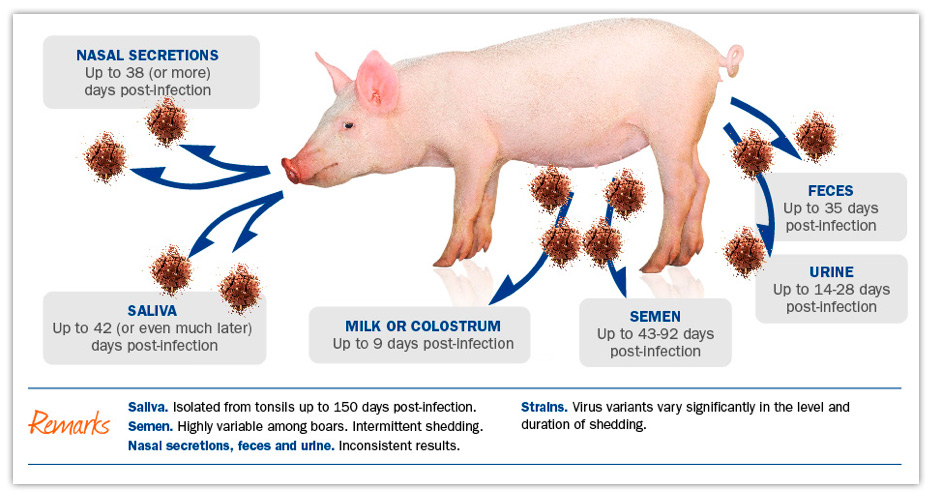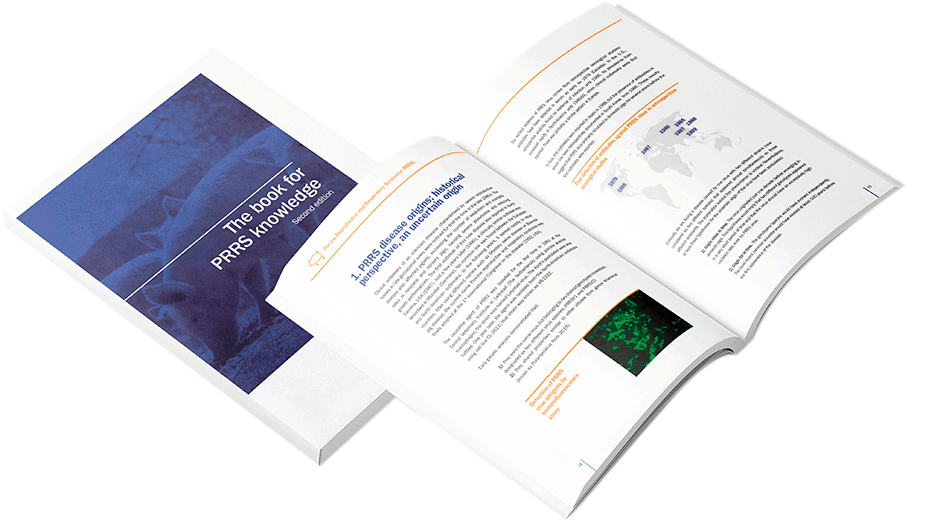To answer this question, the first thing to be considered, it´s that it is not possible to differentiate, by a serum antibody test, an animal infected with PRRSv from a vaccinated one.
Secondly, the pathogenesis of infection should be considered.
Pathogenesis of PRRSv infection in boars
An infected boar usually develops viremia (the presence of virus in blood) that normally lasts for a week or two.
During this viremia period, the semen also contains the PRRS virus. From the second week, the shedding of the virus in semen can last several weeks.
However, at this stage the presence of the virus in semen is intermittent, so an animal can be negative by PCR in semen one day but be positive at a later date.
In addition, if a boar is vaccinated, the vaccine virus can also be shed in semen and reach females without immunity.
Finally, it must be considered that a vaccinated animal could eventually become infected, although the probability is much lower than it would be if it had not been vaccinated.
As a summary, PRRSv positive animals should not be used on a PRRS-free farm, even if they were vaccinated.
If you want to learn more about how PRRS virus is transmitted within herds, visit chapter 2 “Epidemiology” of this site.
You can ask your own question! Visit Pig333.com and submit your question to the experts.
¿Puede utilizarse para inseminación artificial un verraco positivo a PRRS y vacunado contra esta enfermedad?
Para contestar a esta pregunta lo primero que debe conocerse es que no es posible diferenciar mediante un análisis de anticuerpos en suero un animal infectado de uno vacunado.
En segundo lugar debe considerarse la patogenia de la infección.
Patogenia de la infección del virus del PRRS en verracos
Un macho infectado suele desarrollar una viremia (presencia del virus en la sangre) que normalmente se prolonga durante una o dos semanas.
Durante este periodo el semen también contiene virus.
A partir de la segunda semana la excreción del virus en el semen se puede prolongar durante varias semanas.
Sin embargo, en esta fase la presencia del virus en semen es intermitente, por lo que un animal puede ser negativo por PCR en semen un día y otro posterior puede ser positivo.
A esto tiene que sumarse el hecho de que, si se vacuna un macho, el virus vacunal también se puede excretar en el semen y llegar, por esa vía, a hembras sin inmunidad.
Por último tiene que considerarse que un animal vacunado eventualmente podría infectarse, aunque la probabilidad es mucho menor que la que tendría si no se hubiese vacunado.
En resumen, en una explotación libre de PRRS no deberían utilizarse animales seropositivos, aunque estuviesen vacunados.
Si quiere saber más sobre cómo el virus del PRRS se transmite entre los animales presentes en la misma granja, visite el capítulo 2 “Epidemiología” de este sitio web.
Puedes formular tu propia pregunta! Visita 3tres3.com e introduce allí tu pregunta a los expertos.

Centre for Research on Animal Health (CReSA), Barcelona University (UAB) – Spain





